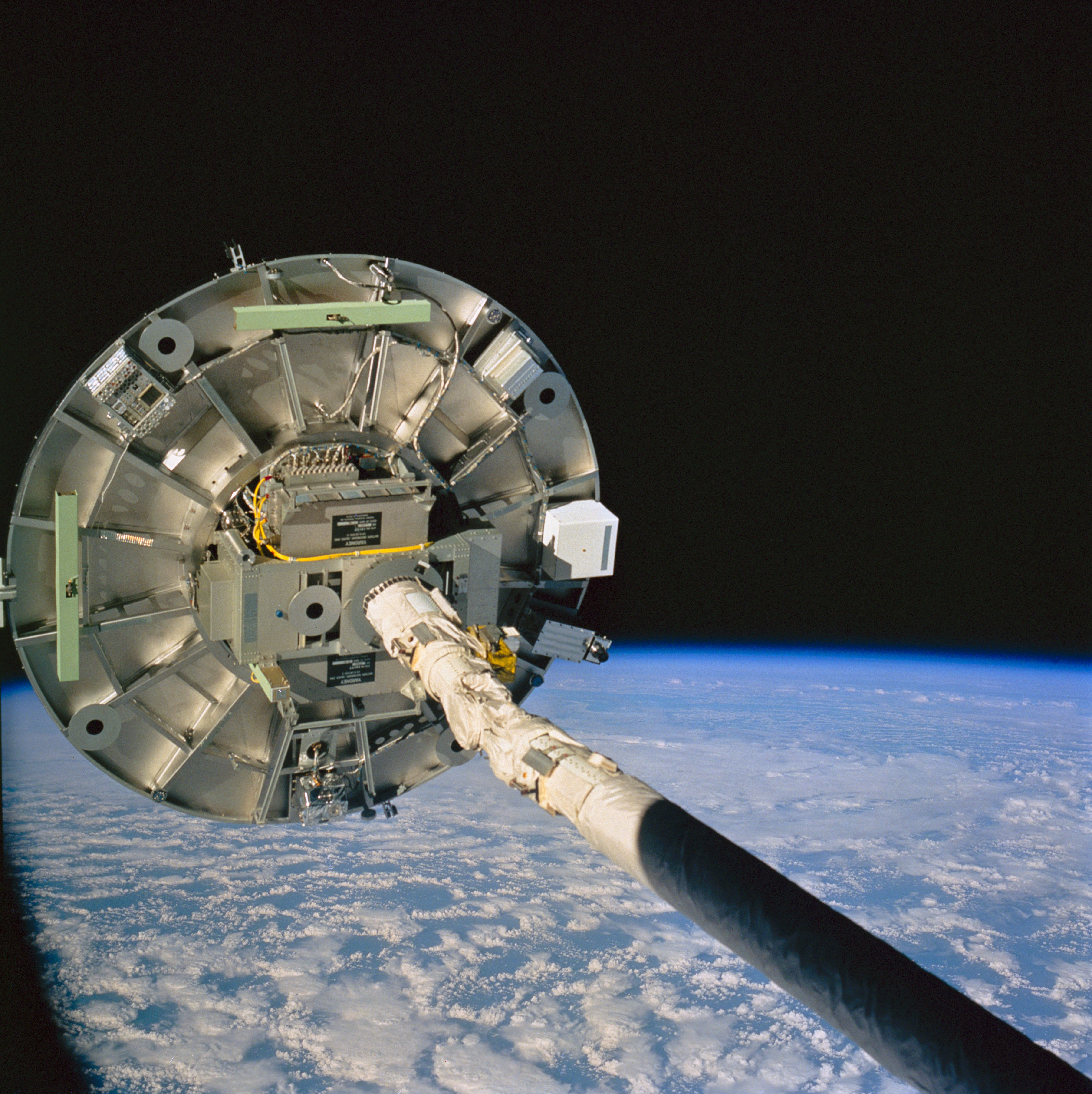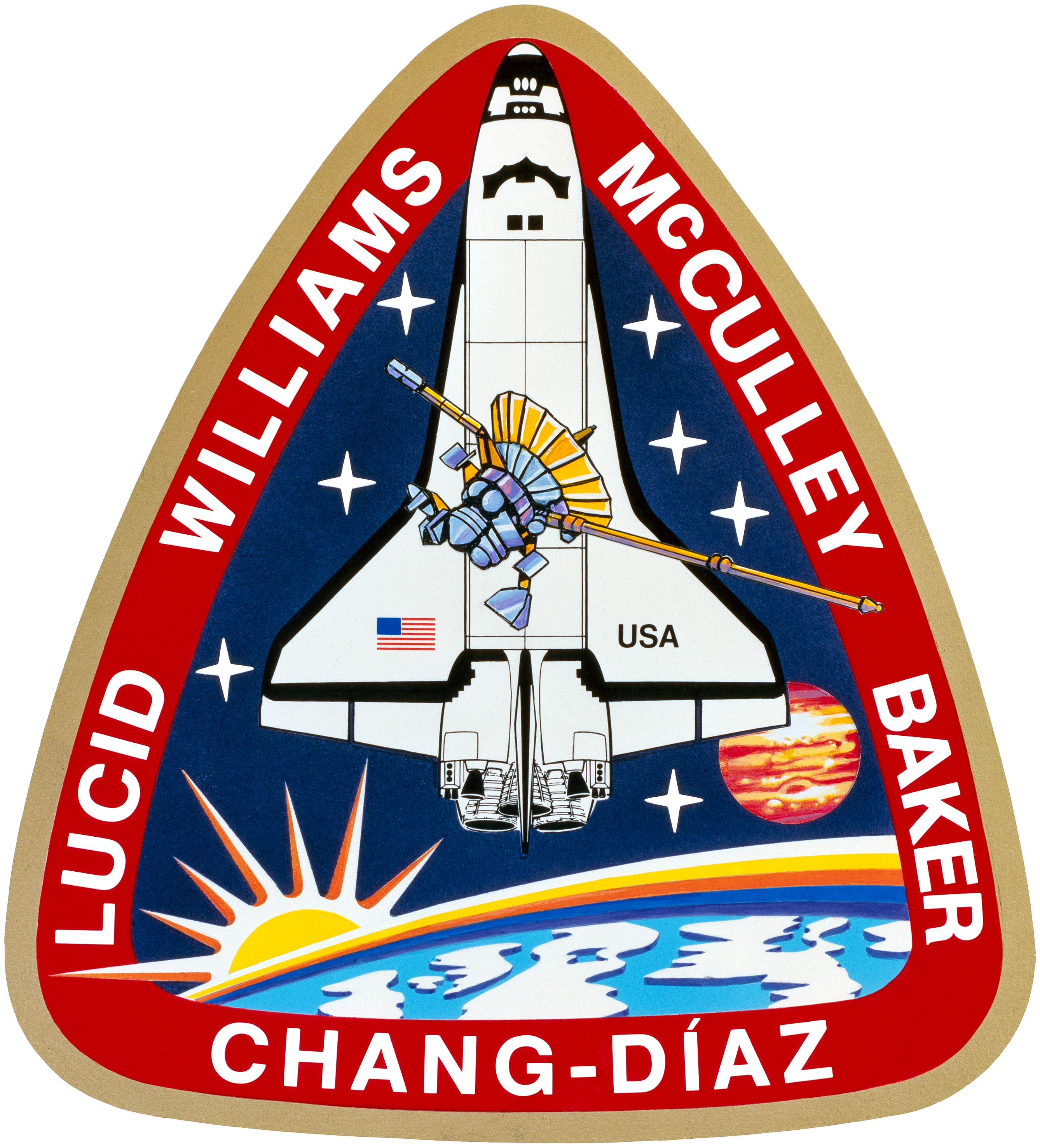|
STS-60
STS-60 was the first mission of the U.S./Russian Shuttle-Mir Program, which carried Sergei K. Krikalev, the first Russian cosmonaut to fly aboard a Space Shuttle. The mission used NASA Space Shuttle ''Discovery'', which lifted off from Launch Pad 39A on 3 February 1994 from Kennedy Space Center, Florida. The mission carried the Wake Shield Facility experiment and a SPACEHAB module, developed by SPACEHAB Inc., into orbit, and carried out a live bi-directional audio and downlink link-up with the cosmonauts aboard the Russian space station '' Mir''. Crew Mission highlights After External Tank (ET) separation and main engine cutoff (MECO), a 2.5 minutes OMS burn was initiated at 12:52 UTC that circularized ''Discovery''s orbit from a orbit to . Shortly after liftoff, pilot Kenneth S. Reightler Jr. experienced problems with his portable headset. The problem was traced to the Headset Interface Unit (HIU) and that unit was swapped with a flight spare. The payload bay do ... [...More Info...] [...Related Items...] OR: [Wikipedia] [Google] [Baidu] |
Jan Davis
Nancy Jan Davis (; born November 1, 1953) is a former American astronaut. A veteran of three space flights, Davis logged over 673 hours in space. She is now retired from NASA. Early life Nancy Jan Davis was born in Cocoa Beach, Florida, but considers Huntsville, Alabama, to be her hometown. She graduated from Huntsville High School in 1971, received a Bachelor of Science degree in applied biology from the Georgia Institute of Technology in 1975 and another in mechanical engineering from Auburn University in 1977. She received a Master of Science degree in 1983 and a doctorate in 1985, both in mechanical engineering at the University of Alabama in Huntsville. Engineering career After graduating from Auburn University in 1977, Davis joined Texaco in Bellaire, Texas, working as a petroleum engineer in tertiary oil recovery. She left there in 1979 to work for NASA's Marshall Space Flight Center as an aerospace engineer. In 1986, she was named as team leader in the Struc ... [...More Info...] [...Related Items...] OR: [Wikipedia] [Google] [Baidu] |
Sergei Krikalev
Sergei Konstantinovich Krikalev (russian: Сергей Константинович Крикалёв, also transliterated as Sergei Krikalyov; born 27 August 1958) is a Russian mechanical engineer, former cosmonaut and former head of the Yuri Gagarin Cosmonaut Training Center. As a prominent rocket scientist, he is a veteran of six space flights and ranks third to Gennady Padalka and Yuri Malenchenko for the most time spent in space: a total of 803 days, 9 hours, and 39 minutes. Krikalev was stranded on board the Mir during the dissolution of the Soviet Union. As the country that had sent him into space no longer existed, his return was delayed and he stayed in space for 311 consecutive days, twice as long as the mission had originally called for. He retired as a cosmonaut in 2007 and was working as vice president of Space Corporation Energia. From 2009 to 2014, he headed the Yuri Gagarin Cosmonaut Training Center. Biography Krikalev was born in Leningrad in the Soviet Uni ... [...More Info...] [...Related Items...] OR: [Wikipedia] [Google] [Baidu] |
Charles Bolden
Charles Frank Bolden Jr. (born August 19, 1946) is a former Administrator of NASA, a retired United States Marine Corps Major General, and a former astronaut who flew on four Space Shuttle missions. He graduated from the United States Naval Academy with the class of 1968. Bolden became a Marine aviator and test pilot. After his service as an astronaut, he became Deputy Commandant of Midshipmen at the Naval Academy. On May 23, 2009, President Barack Obama announced the nomination of Bolden as Administrator of NASA and Lori Garver as deputy NASA administrator."Retired General Picked to Lead NASA" by Kenneth Chang, '''' May 24, 2009 ... [...More Info...] [...Related Items...] OR: [Wikipedia] [Google] [Baidu] |
Wake Shield Facility
Wake Shield Facility (WSF) was a NASA experimental science platform that was placed in low Earth orbit by the Space Shuttle. It was a diameter, free-flying stainless steel disk. The WSF was deployed using the Space Shuttle's Canadarm. The WSF then used nitrogen gas thrusters to position itself about behind the Space Shuttle, which was at an orbital altitude of over , within the thermosphere, where the atmosphere is exceedingly tenuous. The WSF's orbital speed was at least three to four times faster than the speed of thermospheric gas molecules in the area, which resulted in a cone behind the WSF that was entirely free of gas molecules. The WSF thus created an ultrahigh vacuum in its wake. The resulting vacuum was used to study epitaxial film growth. The WSF operated at a distance from the Space Shuttle to avoid contamination from the Shuttle's rocket thrusters and water dumped overboard from the Shuttle's Waste Collection System (space toilet). After two days, the Space Shu ... [...More Info...] [...Related Items...] OR: [Wikipedia] [Google] [Baidu] |
Kennedy Space Center
The John F. Kennedy Space Center (KSC, originally known as the NASA Launch Operations Center), located on Merritt Island, Florida, is one of the National Aeronautics and Space Administration's (NASA) ten field centers. Since December 1968, KSC has been NASA's primary launch center of human spaceflight. Launch operations for the Apollo, Skylab and Space Shuttle programs were carried out from Kennedy Space Center Launch Complex 39 and managed by KSC. Located on the east coast of Florida, KSC is adjacent to Cape Canaveral Space Force Station (CCSFS). The management of the two entities work very closely together, share resources and operate facilities on each other's property. Though the first Apollo flights and all Project Mercury and Project Gemini flights took off from the then-Cape Canaveral Air Force Station, the launches were managed by KSC and its previous organization, the Launch Operations Directorate. Starting with the fourth Gemini mission, the NASA launch contro ... [...More Info...] [...Related Items...] OR: [Wikipedia] [Google] [Baidu] |
Franklin Chang-Díaz
Franklin Ramón Chang-Díaz (born April 5, 1950) is a Costa Rican-born American mechanical engineer, physicist and former NASA astronaut. He is the sole founder and CEO of Ad Astra Rocket Company as well as a member of Cummins' board of directors. He became an American citizen in 1977., ''Wired Science'', November 14, 2007 He is a veteran of seven Space Shuttle missions, tying the record, as of 2021 for the most spaceflights (a record set by Jerry L. Ross). He was the third Latin American, but the first Latin American immigrant NASA Astronaut selected to go into space. Chang-Díaz is a member of the NASA Astronaut Hall of Fame. Family and education Franklin Ramón Chang-Díaz was born in San José, Costa Rica on April 5, 1950, to Ramón Ángel Chang Morales, an oil worker whose own father fled China during the Boxer Rebellion, and María Eugenia Díaz Romerois. One of six children, he has a younger sister, Sonia Rosa (born December 1952) and his mother, brothers and siste ... [...More Info...] [...Related Items...] OR: [Wikipedia] [Google] [Baidu] |
STS-62
STS-62 was a Space Shuttle program mission flown aboard . The primary payloads were the USMP-02 microgravity experiments package and the OAST-2 engineering and technology payload, both in the orbiter's cargo bay. The two-week mission also featured a number of biomedical experiments focusing on the effects of long duration spaceflight. The landing was chronicled by the 1994 Discovery Channel special about the Space Shuttle program and served as the show's opening. A C.F. Martin backpacker guitar was also flown aboard ''Columbia'' during the mission. Crew Mission highlights Day 1 Flight Day One (Friday, March 4) consisted of ascent operations and reconfiguration of the orbiter in order to support orbital operations, an OMS-2 burn to circularize ''Columbias orbit to a orbit, USMP-2 activation, PSE operations, APCG activation, CPCG operations, RMS checkout, DEE operations, CGBA activation. The payload bay doors were opened at 10:26 am EDT. Day 2 On Flight Day Two (Saturd ... [...More Info...] [...Related Items...] OR: [Wikipedia] [Google] [Baidu] |
Space Shuttle Discovery
Space Shuttle ''Discovery'' ( Orbiter Vehicle Designation: OV-103) is one of the orbiters from NASA's Space Shuttle program and the third of five fully operational orbiters to be built. Its first mission, STS-41-D, flew from August 30 to September 5, 1984. Over 27 years of service it launched and landed 39 times, aggregating more spaceflights than any other spacecraft to date. The Space Shuttle launch vehicle has three main components: the Space Shuttle orbiter, a single-use central fuel tank, and two reusable solid rocket boosters. Nearly 25,000 heat-resistant tiles cover the orbiter to protect it from high temperatures on re-entry. ''Discovery'' became the third operational orbiter to enter service, preceded by '' Columbia'' and '' Challenger''. It embarked on its final mission, STS-133, on February 24, 2011, and touched down for the last time at Kennedy Space Center on March 9, having spent a cumulative total of nearly a full year in space. ''Discovery'' performed both ... [...More Info...] [...Related Items...] OR: [Wikipedia] [Google] [Baidu] |
Astrotech Corporation
Astrotech Corporation, formerly Spacehab Inc., is a technology incubator headquartered in Austin, Texas. Astrotech uses technology sourced internally and from research institutions, government laboratories, and universities to fund, manage and sell start-up companies. Astrotech Corporation's subsidiaries provide commercial products and services to NASA, the U.S. Department of Defense, national space agencies, and global commercial customers. History Astrotech Corporation Astrotech Corporation was established in 1984. Prior to 2009, it was known as SPACEHAB, Inc., a company that provided space habitat microgravity experimentation equipment and services to NASA during the Space Shuttle era. As the Shuttle program came to an end, the company put more focus on its spacecraft processing business, Astrotech Space Operations, Inc. (ASO), its mass spectrometer instrumentation business, 1st Detect, Inc. and its microgravity vaccine development company, Astrogenetix, Inc. In August ... [...More Info...] [...Related Items...] OR: [Wikipedia] [Google] [Baidu] |
STS-61
STS-61 was the first NASA Hubble Space Telescope servicing mission, and the fifth flight of the Space Shuttle ''Endeavour''. The mission launched on 2 December 1993 from Kennedy Space Center (KSC) in Florida. The mission restored the spaceborne observatory's vision (marred by spherical aberration in its mirror) with the installation of a new main camera and a corrective optics package (COSTAR). This correction occurred more than three and a half years after the Hubble was launched aboard STS-31 in April 1990. The flight also brought instrument upgrades and new solar arrays to the telescope. With its very heavy workload, the STS-61 mission was one of the most complex in the Shuttle's history. It lasted almost 11 days, and crew members made five spacewalks (extravehicular activities (EVAs)), an all-time record; even the re-positioning of Intelsat VI on STS-49 in May 1992 required only four. The flight plan allowed for two additional EVAs, which could have raised the total nu ... [...More Info...] [...Related Items...] OR: [Wikipedia] [Google] [Baidu] |
Space Shuttle
The Space Shuttle is a retired, partially reusable low Earth orbital spacecraft system operated from 1981 to 2011 by the U.S. National Aeronautics and Space Administration (NASA) as part of the Space Shuttle program. Its official program name was Space Transportation System (STS), taken from a 1969 plan for a system of reusable spacecraft where it was the only item funded for development. The first ( STS-1) of four orbital test flights occurred in 1981, leading to operational flights (STS-5) beginning in 1982. Five complete Space Shuttle orbiter vehicles were built and flown on a total of 135 missions from 1981 to 2011. They launched from the Kennedy Space Center (KSC) in Florida. Operational missions launched numerous satellites, interplanetary probes, and the Hubble Space Telescope (HST), conducted science experiments in orbit, participated in the Shuttle-''Mir'' program with Russia, and participated in construction and servicing of the International Space Station (IS ... [...More Info...] [...Related Items...] OR: [Wikipedia] [Google] [Baidu] |







.jpg)


